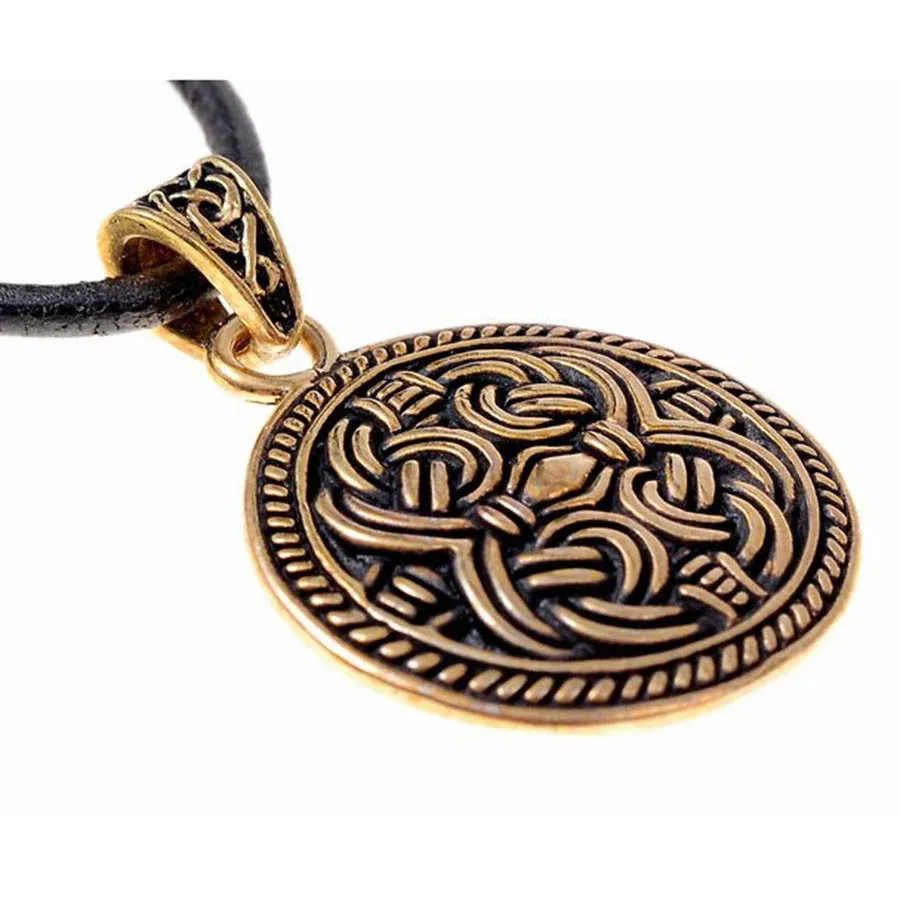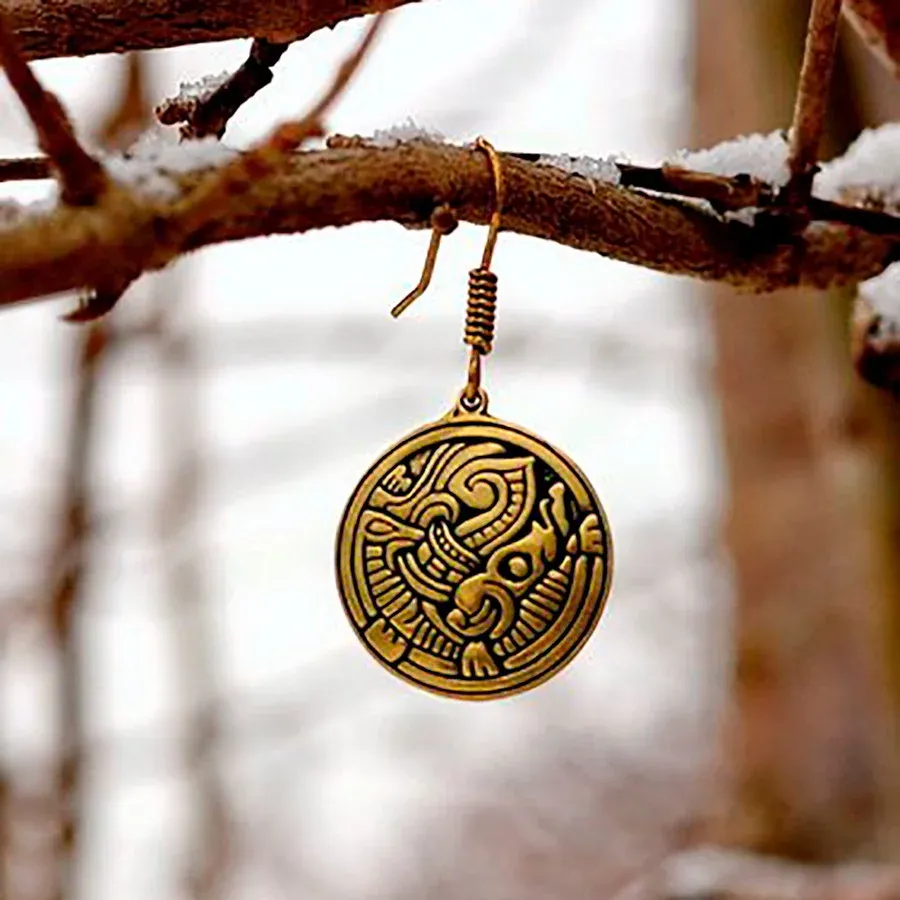What is the Borre Viking style?
The Borre Viking style is an artistic manifestation that developed during the Viking Age, approximately from the second half of the 9th century to the end of the 10th century. This style is one of the most distinctive features of Scandinavian decorative art and originated from findings in the Borre cemetery in Vestfold, Norway. Discoveries in this area, particularly the harness fittings of a funeral ship, have allowed the identification and characterization of this unique style, which can be found in various regions, reflecting the extensive influence and contacts of the Vikings during their travels.

Main Features of the Borre Style
- Zoomorphic Motifs: The most prominent characteristic of the Borre style is the use of stylized animals, generally represented head-on, with elongated bodies resembling ribbons. These figures often have polygonal hips and features of "gripping beasts", whose limbs seem to hold other elements of the composition, creating a visual effect of wrapping or enclosing themselves.
- Geometric Patterns and Closed Compositions: The style emphasizes the use of space, completely covering it with decorations. These dense compositions often include intertwined bands that simulate chains or braids, known as "double ring-chain", creating repetitive and symmetrical patterns.
- Technical Details: It is notable for its skill in filigree and granulation, showcasing meticulously worked details that often imitate filigree wire in metal designs.
- Innovations Regarding Previous Styles: Although the Borre style is based on the heritage of the Oseberg style, it incorporates greater complexity in the motifs and emphasizes symmetry and the use of continuously decorated space.
Areas of Use and Examples
- This style was primarily applied to metal objects such as brooches, buckles, belt tips, and various personal adornments. It was also used in the decoration of boats and wooden objects.
- Although many pieces were found in Norway, Denmark, and Sweden, the style spread due to trade and Viking settlements in Western and Eastern Europe.
- Today, the motifs and designs of the Borre style continue to inspire jewelry and art, reflecting the characteristic braid and silhouettes of the “captivating beasts.”

Comparison with Other Viking Styles
- In contrast to the Oseberg style, Borre presents denser and closed compositions, without open backgrounds.
- Compared to the Jelling style, which is its successor, Borre maintains front-facing and geometric animal figures while Jelling prefers more open and fluid figures.
Cultural Importance
The Borre style is crucial in the history of Viking art, as it reflects both the Nordic cultural identity and the ability of the Vikings to integrate and influence other cultures. Its repetitive patterns, symmetry, and interlaced motifs continue to be emblematic of Viking aesthetics and still inspire art and goldsmithing today.
In short, the Borre style is distinguished by its geometric complexity and decorative density, representing one of the great stages of Viking artistic creativity.




























